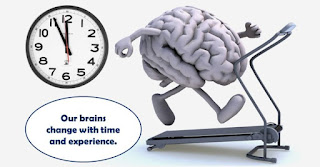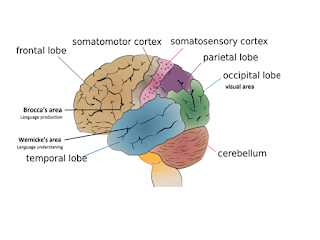AQA A-LEVEL: Biopsychology - Brain Plasticity and Recovery after Trauma
BRAIN PLASTICITY AND RECOVERY AFTER TRAUMA
BRAIN PLASTICITY: Brains ability to change and adapt mentally and functionally as a result of experience and new learning.
EXPERIENCE EXPECTANT PLASTICITY: Changes in the brain taking place in infancy
BRAIN PLASTICITY: Brains ability to change and adapt mentally and functionally as a result of experience and new learning.
EXPERIENCE EXPECTANT PLASTICITY: Changes in the brain taking place in infancy
- We have 15,000 synaptic connections by 2-3yrs through synaptogenesis which is double what we have as an adult. Not all synaptic connections are used so some are deleted by cognitive pruning which strengthens the frequently used synapses.
- Synaptogenesis - New synapses form through life but mostly in infancy
- Neurogenesis - New neurones form. Occurs in infancy and adulthood.
- Synaptic Pruning - Synapse elimination which occurs in early childhood and the onset of puberty - occurs less in adulthood.
- COMPUTER GAMING - KUHN et al
- Looked at the benefits of Super Mario for 2 months for 30 mins a day. There were increases in the hippocampus for working memory in terms of planning and performance.
- TAXI DRIVING - MAGUIRE et al
- Studied the brains of taxi drivers, found more grey matter in the posterior hippocampus than the control group. Shows evidence of plasticity if you learn new skills some areas of the brain are more active.
- JUGGLING - BOYKE et al
- Found brain plasticity evidence in 80yr olds who were taught to juggle. They had increased matter in the visual cortex. When they stopped practising the changes reversed. Evidence of synaptogenesis and pruning. Also, shows plasticity and that the brain continues to develop.
FUNCTIONAL RECOVERY
After trauma such as infections and strokes, individuals may experience a loss of brain function. Issues like paralysis, aphasia, language issues, memory loss and difficulties in perception occur. Unaffected areas may adapt or compensate for damaged areas
- Neural Regeneration - New nerve endings grow and connect with undamaged areas which compensate for damaged areas. Enables the recovery of previously lost functioning.
- Neural Unmasking - When dormant synapses are activated and opened so they become functional. A form of Neurogenesis.
- Neural Reorganisation - When the brain transfers function from damaged area to undamaged sections.
DANELLI - Investigated an Italian boy EB who had most of his left hemisphere removed at age 2 1/2 to remove a tumour. W/ intensive therapy EB's right hemisphere was able to take over left hemisphere functions such as language and speech due to EB's maximal plasticity as he was young.
EVALUATION
RESEARCH SUPPORT - Danelli
- Through therapy and maximal plasticity, EB was able to get his right brain to take over his missing left brain's function such as language.
Case studies LACK ECOLOGICAL VALIDITY
- Cannot be applied to pt's over 2 1/2 years old. Also, androcentric, female brains can differ.
OTHER FACTORS can influence the ability to recover
- Functional plasticity reduces w/ age, so recovery from brain trauma theory is not universal to all.
CONTRADICTORY EVIDENCE - Elbert et al
- Capacity for neural reorganisation is much greater in children than adults. Adults may need to use compensatory behavioural strategies to work around cognitive deficits as they have a weaker neural ability to recover from brain trauma.
PRACTICAL APPLICATIONS
- Research into stem cells has revived interest in neural transplantation. Stem cells implanted into damaged areas can cause neurogenesis
- TAJIRI et al - Done in rats w/ traumatic brain injuries.



Comments
Post a Comment